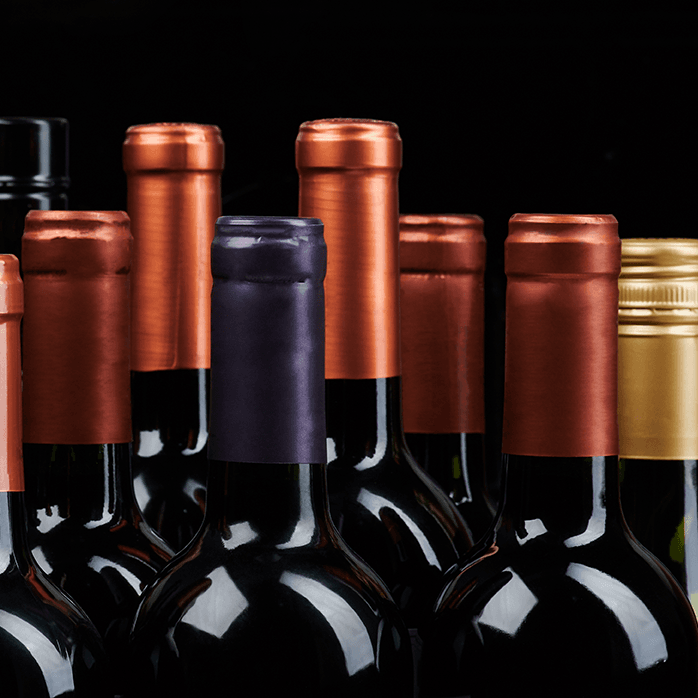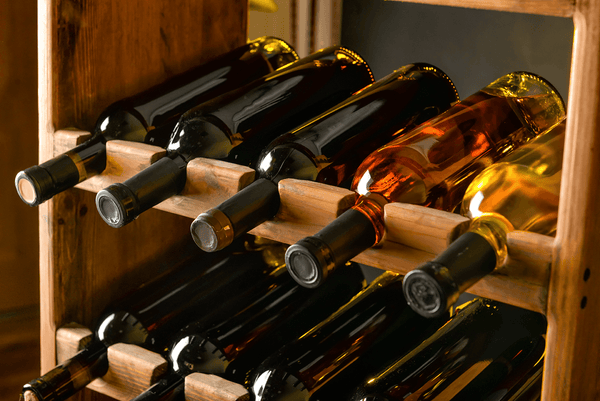
Wine Storage Tips
Share

Whether you’re a new wine collector or you have a few bottles on hand that you don’t plan on drinking right away, it’s necessary to know how and where to store your unopened wines to ensure they taste their best when you choose to pop the corks. Wine storage doesn’t have to be complicated, but there are definitely a few things you should keep in mind before you stow those bottles. Here are the essentials:
1. Orientation
Corked wine should always be stored horizontally, not vertically. This ensures that the wine inside the bottle stays in contact with the cork, keeping it moist. A dry cork lets in more air, which can cause seepage and accelerated aging. While it may be tempting to keep the bottles upright on a shelf or other surface to save space, it’s best not to risk oxygen exposure spoiling the wine prematurely. It’s not essential to store wines with screw cap closures horizontally, though it is certainly an efficient solution, especially if you’re storing other bottles in the same manner.

2. Temperature
Perhaps the most important element to consider is temperature. Exposing wine to temperatures either too hot or too cold is a surefire way to spoil it. Generally speaking, 55 degrees Fahrenheit is the ideal temperature for wine storage, but there can be different recommendations for different wines. If you want to know the ideal temperature for a particular wine, it’s best to contact the winery, but if you’re looking for more general, varietal-based recommendations, here is a good article to reference. Regardless of style or label, wine should never be stored at temperatures below 25 degrees Fahrenheit, which can result in freezing, or above 68 degrees which will rapidly accelerate the aging process. It’s best to keep the storage temperature stable. Fluctuations in temperature can cause the cork to expand and contract, resulting in seepage and unwanted airflow.
3. Humidity
Humidity of the wine storage area should be kept close to a neutral 70%, if possible. Low humidity can cause corks to dry out, the effects of which we discussed previously, while high humidity can foster mold growth.
4. Light Exposure
The sun’s UV rays and other light sources can, of course, warm the wine unwantedly, but the light itself can also damage the wine’s aromas and flavors. Wine is best kept in a dark area, such as a cabinet or room with solid or UV-resistant doors, but if this isn’t possible, keep the wine inside a box to avoid unnecessary exposure to light.

5. Vibration
Choose a storage area that isn’t near sources of vibration (speakers and laundry rooms, for example), and once you’ve chosen the appropriate location, keep the wine there until you’re ready to open it. Unnecessary movement can disturb sediments inside the bottle, which negatively affects the aging process.
There are a number of storage solutions available that check all of these boxes—wine refrigerators, stationary wine racks, or dedicated cellar rooms if you’re so lucky. However, if you’re expecting your collection to grow over time, it’s worth exploring the easily expandable solution we offer at WineHive. Our modular rack system is an excellent choice for budding and seasoned wine collectors alike. Ionized aluminum components slide and lock together to create a stylish aesthetic, neatly fitting any space, nook, or wall. We offer easy-to-install kits, as well as completely custom installations.


